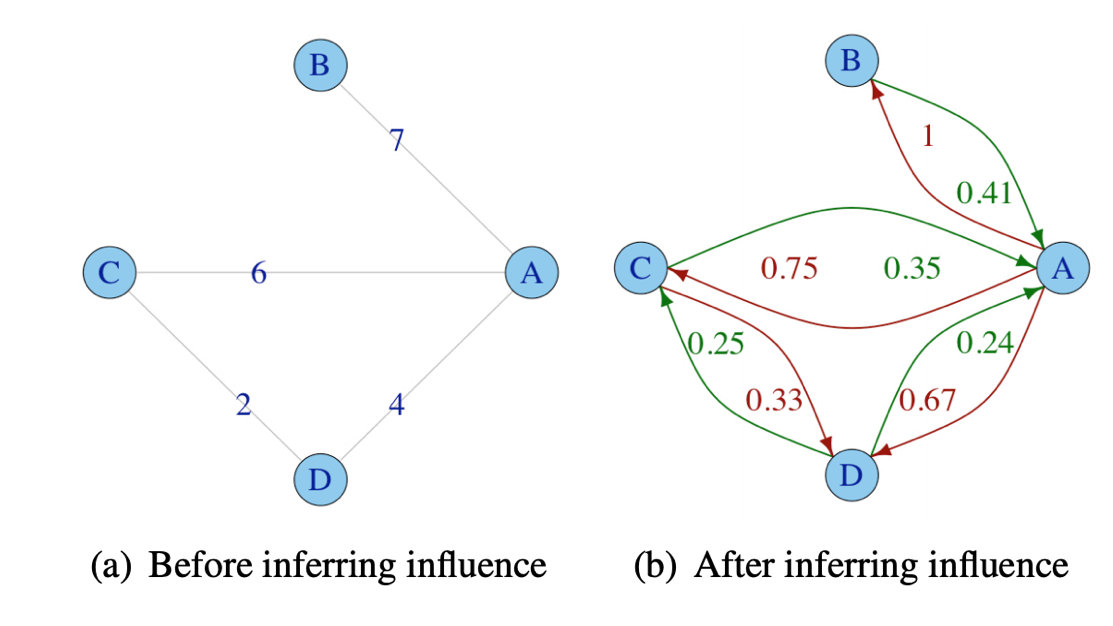Social media is common and widespread. It’s a useful tool to connect with others and to expand your social network by reaching out to meet new people, whether it be for job recommendations, friendships or more. When finding new people to connect with, we either search for them or we ask others to reach out to the person they may know. However, based on my research, this isn’t necessarily the best way to connect with someone. This method fails to include the strength of a social tie between two people and the asymmetry of social relationships, which leaves it less efficient than an algorithm that would include those two criteria. That’s why, this article has theorized and shown that adding directed weighted edges that store an influence one person has on another to social network graphs will cover social tie strength and asymmetry, and thus make the algorithm more efficient in finding someone to connect with.
An influence is the power one person has over someone, which could lead to them being more likely to follow their instructions. For example, an influence a person A has over a person B, is said to be the amount of investments B makes on A. A and B may be two Twitter users and if B interacts with A often, it’s said that A has a strong influence on B. And if A doesn’t interact with B back, B doesn’t have a strong influence on A. This shows the asymmetry in the social tie here and this has an affect on whether someone can reach their target person. Below is an example of a graph with weighted edges storing influence added to it.

With this idea, the algorithm to find the strongest path, which includes weighing influence, ends up being better than the shortest path algorithm when it comes to connecting with someone. Twitter was used as an example in the article I read where they used both the strongest and shortest path algorithms to determine which one was better to go from a source person to a target. And it turned out, the strongest path is better for 68% of searches in Twitter than the shortest path. This is because if B wants A to introduce them to someone A knows, this might not work if B has no influence over A because A might not necessary agree to introduce them. But if B did have a strong influence on A, then A would be more likely to introduce them. Which means that influence plays a huge role on whether a person will reach their target person.
Overall, as learned in class, social networks are very important and the article I found taught us that influence plays a strong role in the way we meet people through networking. In a social network graph, it’s beneficial to have a weight on the edges to store how much influence one person has on another because this increases the chance of you being able to meet someone through them. And in this day and age, it’s important to have connections, so with the strongest path algorithm this idea of influence can assist others in expanding their social networks.
References: https://homes.cs.washington.edu/~jheer/files/snakdd.pdf